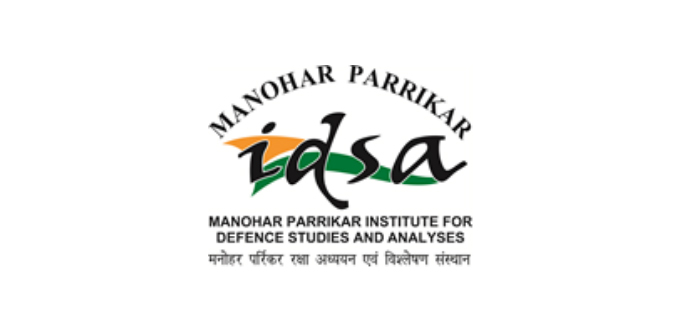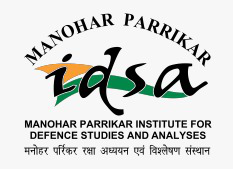
- This event has passed.
Report of Monday Morning Meeting on China-Pakistan Nexus: China’s Role post-Pahalgam Attack

Ms. Namita Barthwal, Research Analyst, Military Affairs Centre, Manohar Parrikar Institute for Defence Studies and Analyses (MP-IDSA), spoke on “China-Pakistan Nexus: China’s Role post-Pahalgam Attack” during the Monday Morning Meeting held on 30 June 2025. The session was moderated by Col. Vivek Chadha (Retd), Senior Fellow, MP-IDSA. Ambassador Sujan R. Chinoy, Director General, MP-IDSA, and scholars of the Institute, attended the meeting.
Executive Summary
The discussion focused on China’s multifaceted involvement following terrorist attacks like Mumbai (2008), Pulwama (2019), and now Pahalgam (2025), as well as the strategic support that China has historically and recently given to Pakistan. It described China’s strategy of using information warfare, intelligence sharing, and diplomatic protectionism to strengthen Pakistan’s position. The implications for India’s strategic planning were highlighted through a critical analysis of specific examples, such as China’s position at the United Nations Security Council (UNSC), military-industrial cooperation, and the growth of the China-Pakistan Economic Corridor (CPEC).
Detailed Report
Col. Vivek Chadha (Retd.), the moderator, after his introductory remarks, invited Ms. Barthwal to make her presentation.
Ms. Barthwal began her presentation by giving the historical context of the China – Pakistan relationship. Using a 1965 statement by India’s Ambassador to the United States about China’s censure of India and its diplomatic support for Pakistan during the war, Ms. Namita Barthwal began her presentation by going over the history of the strategic alliance between China and Pakistan. She pointed out that the relationship has been especially adaptable in times of conflict, changing and intensifying during tensions between India and Pakistan. The phase following the most recent Pahalgam attack, was presented as a new strategic turning point, setting the stage for the current analysis of China’s involvement.
Ms. Barthwal highlighted China’s deliberate attempt to limit or counterbalance India’s regional influence. China’s public diplomacy toolkit included strategic terms like ‘all-weather friendship’ and ‘ironclad friend’, for Pakistan, which were highlighted during the presentation. Additionally, China’s actions during previous crises, such as the Kargil conflict in 1999, the Mumbai attacks in 2008, and the Pulwama bombing in 2019, were attributed to a broader, ongoing pattern of strategic alignment and diplomatic cover with Pakistan.
Giving the example of the 2001 attack on the Indian Parliament, Ms. Barthwal explained how China attempted to reimpose strategic cooperation with Pakistan and deflect international attention from Islamabad’s role in attack, thereby highlighting China’s diplomatic shield for Pakistan, in the process. It was investigated how Pakistan’s narrative was amplified through state-led media campaigns and Chinese-controlled social media, especially with regard to diversionary strategies like bringing up the Indus Water Treaty at international forums. The speaker examined how such actions are intended to exacerbate crises, and muddy India’s international image.
Ms. Barthwal then discussed China’s military and non-kinetic support to Pakistan. Beyond diplomacy, she delved into China’s alleged provision of non-kinetic capabilities and real-time intelligence. It was hypothesised that Chinese satellites, fishing boats, and military surveillance capabilities would subtly but significantly improve Pakistan’s situational awareness. Deepening congruity between the two militaries was evident due to the discussions regarding potential presence of Chinese military advisers in Pakistan and the use of Chinese-made military equipment during operations. In addition to enhancing Pakistan’s operational preparedness, Ms. Barthwal argued that these trends establish China as a dependable security partner.
Ms. Barthwal went into further detail about China’s information warfare strategy, specifically how it used the Pahalgam incident to significantly influence perceptions both at home and abroad. She pointed out the increase in anti-Indian narrative on Chinese social media sites as well as joint attempts by Chinese academics and think tanks to advance Beijing’s military industrial capabilities while claiming neutrality. She emphasised how China strategically uses information operations to delegitimise India’s security response to the international community, while simultaneously showcasing China’s military might. The two countries’ technological cooperation, including the transfer of J-10 fighter jets and the co-production of Unmanned Aerial Vehicles (UAVs), were also discussed. Important elements of the developing military alliance between China and Pakistan were identified, including the former’s assistance in intelligence sharing, and the presence of Chinese and Turkish personnel in Pakistan during the operations.
With reference to China’s role post-conflict, the speaker’s presentation demonstrated that in the post crisis phase of any conflict between India and Pakistan, China has stuck to its regular pattern of frequently reestablishing its strategic alignment with Pakistan and repositioning itself as an impartial mediator in the India-Pakistan conflict. Ms. Barthwal detailed China’s initiatives to hold informal talks with Pakistan and Afghanistan, strengthen Pakistan’s counterterrorism capabilities, and expand initiatives like CPEC into areas that are disputed.
Ms. Barthwal concluded the presentation by highlighting three persisting trends:
- China’s continued tri-domain support (diplomatic, military, and informational) for Pakistan remains a strategic constant post any conflict between India and Pakistan.
- China maintains its role of playing a silent strategist during conflicts like Operation Sindoor, influencing outcomes without direct confrontation.
- Information warfare remains being the central pillar of China’s approach, aiming at influencing global narratives while undermining India’s regional image.
She warned that therefore, careful monitoring is necessary of China’s use of Pakistan as a regional proxy, especially as Beijing looks to expand its commercial and geopolitical influence in South Asia.
Questions and Comments
During the question-and-answer session, Ambassador Sujan R. Chinoy, Director General, MP-IDSA, emphasised the need for more scholarly research on the Pakistan-China relationship. He also suggested including Pakistan’s strategic view of China in the discussion in order to gain a deeper understanding of the bilateral dynamics.
He suggested focusing on the evolution of China-Pakistan relations from the 1950s, particularly Pakistan’s strategic alignments with China and the United States. Key turning points—such as Pakistan’s entry into the Southeast Asia Treaty Organisation (SEATO) and the Baghdad Pact.
Other scholars raised critical questions and observations. One of them pertained to the fact that after the 1963 Sino-Pakistan Boundary Agreement the strategic relationship between the two countries deepened further.
A question about China’s participation in the Financial Action Task Force (FATF) was brought up. Col. Vivek Chadha (Retd), the moderator, responded by explaining that China’s involvement in the FATF is rather limited due to the organization’s strong Western influence. He added that the FATF’s consensus-based decision-making process is often vague and subject to the influence of nations offering technical assistance, allowing dominant powers to control the outcome.
Another research scholar raised a question regarding the potential use of JF-17s by China and if there has been any change in the technological trajectory. The speaker, Ms. Namita Barthwal replied by stating that JF-17s were transferred by China to Pakistan. Additionally, an increased collaboration could be see between the two counties since the war on terror was announced in 2001.
Finally, the conversation touched upon India’s military preparedness in the context of a potential two-front conflict as the China-Pakistan nexus appears to be an evolving, hybrid threat , reinforcing the need for robust doctrinal planning and technological self-reliance on India’s part.
The Report was prepared by Ms. Saanya Sidhra, Intern, South Asia Centre.




